Alpine Newt
- March 15, 2024
- 0 comment
Alpine newt (Ichthyosaura alpestris), with its vibrant colors and intriguing life cycle, captivates the hearts of herpetologists and nature lovers alike. Native to the mountainous and forested regions of Central and Southern Europe, this species showcases a remarkable adaptability to both aquatic and terrestrial environments, underlining the complex balance of our ecosystem. This article delves into the biology, behavior, habitat, conservation status, and fascinating aspects of the Alpine newt, offering insights into one of nature’s most enchanting amphibians.

Alpine Newt Characteristics
| Category | Details |
|---|---|
| Scientific Name | Ichthyosaura alpestris |
| Common Names | Alpine Newt |
| Classification | Kingdom: Animalia, Phylum: Chordata, Class: Amphibia, Order: Urodela, Family: Salamandridae |
| Size | Typically 9 to 12 cm (3.5 to 4.7 inches) in length |
| Weight | Varies with size, generally light due to small size |
| Lifespan | Up to 20 years in the wild, potentially longer in captivity |
| Habitat | Forested and mountainous regions with access to both aquatic and moist terrestrial areas for breeding and non-breeding seasons, respectively |
| Distribution | Central and Southern Europe |
| Diet | Carnivorous, feeding primarily on invertebrates such as insects, larvae, and worms |
| Behavior | Breeds in water but spends much of its life on land. Exhibits complex mating rituals and is known for its seasonal migration to breeding waters |
| Reproduction | Lays eggs in water during spring. Females lay eggs individually on aquatic plants. Larvae undergo metamorphosis to become terrestrial juveniles |
| Conservation Status | Least Concern, stable population but faces threats from habitat destruction, pollution, and climate change |
| Conservation Efforts | Habitat protection, pollution control, research, and monitoring of populations to ensure sustainability |
| Cultural Significance | Interest mainly among herpetologists, nature enthusiasts, and for educational purposes in biodiversity and conservation efforts |
| Challenges | Protecting habitats from destruction and pollution, mitigating the impact of climate change, and preserving clean water sources |
Appearances
Males
During the breeding season, male Alpine Newts exhibit particularly vibrant colors. Their dorsal (back) side showcases a striking blue to bluish-black color, which contrasts beautifully against their bright orange or yellow ventral (belly) side. This belly is speckled with large, dark spots, making it quite eye-catching. Additionally, males develop a conspicuous, wavy crest along their back and tail during this period, which is not present outside of the breeding season.

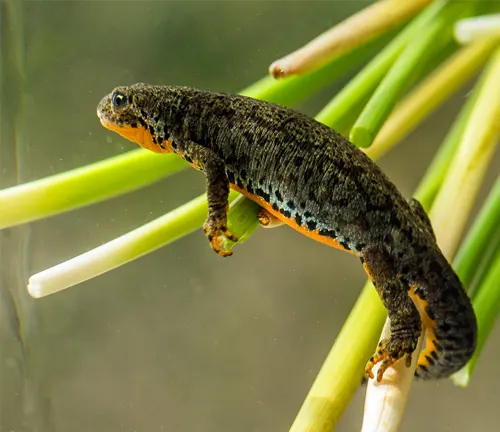
Females
Females, on the other hand, tend to have a more subdued color palette. Their dorsal side is usually brownish or grey, though it can display a range of shades within these colors. Like the males, females have an orange to yellow belly, but the spots are typically smaller and less pronounced. Females lack the dorsal crest seen in males during the breeding season, which helps in distinguishing between the sexes.
Juveniles
Juvenile Alpine Newts, known as efts, also have their unique characteristics. They are generally more uniform in color, ranging from brown to olive green, which helps them blend into their terrestrial surroundings. This camouflage is crucial for survival in the wild, as it helps them avoid predators.

Biology and Description
The Alpine newt is a medium-sized species, with males reaching up to 12 cm in length, while females can grow slightly larger. They exhibit sexual dimorphism, particularly noticeable during the breeding season. Males display vibrant blue colors along their backs with a conspicuous orange belly adorned with large, black spots. In contrast, females are characterized by a more subdued coloration, usually a mix of greys and browns, though they also possess the distinctive orange belly.
Habitat and Distribution
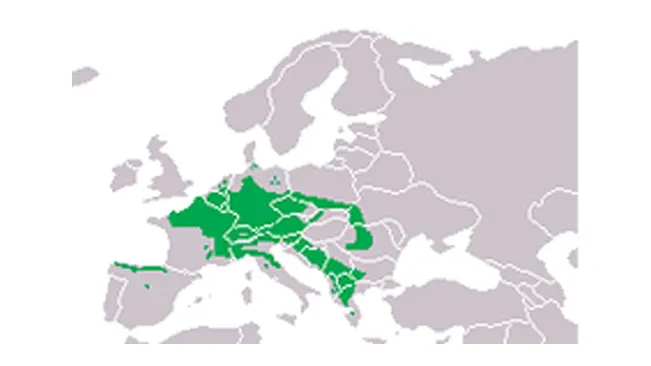
Alpine newts are predominantly found in the forests, grasslands, and mountainous regions of Central and Southern Europe. They require habitats with access to both aquatic environments for breeding and moist, sheltered terrestrial areas for the non-breeding season. Ponds, slow-moving streams, and even temporary water bodies serve as breeding sites, while leaf litter, underbrush, and burrows provide refuge on land.
Life Cycle and Behavior
Alpine newts have a fascinating life cycle that spans both aquatic and terrestrial environments. The breeding season, typically from March to June, finds them in water bodies, where elaborate mating rituals unfold. Males perform a courtship dance to attract females, involving intricate movements and the waving of their tails to disperse pheromones. Following successful mating, females lay eggs individually on aquatic plants, which hatch into larvae after about three weeks.

The larvae undergo a metamorphosis over a few months, transforming into terrestrial juveniles. This juvenile phase, known as the eft stage, can last from one to three years before they return to the water as adults for reproduction. Alpine newts may live up to 20 years, a testament to their resilience and adaptability.
Seasonal Habitat Change
Alpine Newts migrate between aquatic environments for breeding in spring and terrestrial habitats for the rest of the year. This change ensures access to suitable breeding sites and terrestrial feeding grounds.
Elaborate Mating Displays
During the breeding season, males showcase vibrant colors and perform a series of visual and pheromonal displays to attract females. These displays include undulating movements and tail waving to distribute pheromones.
Egg Laying in Water
Females lay their eggs individually on aquatic plants, carefully selecting locations that offer protection from predators and optimal conditions for development. Each egg is wrapped in a leaf or submerged vegetation to ensure its safety.
Ambush Predation
Alpine Newts adopt an ambush strategy, remaining still and waiting for prey to come within reach before quickly capturing them. This method allows them to feed on a variety of invertebrates with minimal energy expenditure.
Toxin Secretion
When threatened, Alpine Newts secrete toxins from their skin to deter predators, making them less palatable. This defense mechanism is vital for their survival in both terrestrial and aquatic habitats.
Playing Dead
To avoid predation, Alpine Newts may play dead or become completely immobile, making them less noticeable to predators. This behavior helps them to escape when faced with imminent threats.
Annual Breeding Migration
Each year, Alpine Newts embark on a migration to return to their aquatic breeding sites, often traveling significant distances from their terrestrial habitats. This migration is crucial for reproduction, with many returning to the same site annually.
Solitary Lifestyle
Outside of the breeding season, Alpine Newts lead a mostly solitary existence, preferring to live and hunt alone. This solitary behavior minimizes competition for resources and helps in predator avoidance.
Territorial Displays During Breeding
Males can become territorial during the breeding season, showing aggression towards other males to secure mating opportunities. These displays are part of the competition for female attention and breeding rights.
Environmental Adaptability
Alpine Newts exhibit remarkable adaptability, thriving in both aquatic and terrestrial environments by adjusting their behavior and physiology. This versatility allows them to exploit a wide range of habitats and food sources.
Aestivation During Dry Periods
In response to dry or harsh conditions, Alpine Newts can enter a state of dormancy known as aestivation, conserving moisture and energy until conditions improve. This ability is crucial for surviving periods of scarcity or extreme temperatures.
No Direct Parental Care
After laying eggs, Alpine Newt females do not provide further care, leaving the eggs to develop independently. This strategy allows the females to conserve energy and resources for their own survival and future reproductive efforts.
Conservation Status
The IUCN (International Union for Conservation of Nature) currently lists the Alpine newt as of “Least Concern,” indicating a stable population across its range. However, habitat destruction, pollution, and the introduction of invasive species pose significant threats. Conservation efforts are crucial to maintain stable populations, including habitat protection, pollution control, and research into their ecological role.
Ecological Role and Importance
Alpine newts play a vital role in their ecosystems, acting as both predators and prey. Their diet mainly consists of invertebrates, contributing to the control of insect populations. They are also a key food source for various birds, mammals, and larger amphibians, highlighting their integral position in the food web.
Different Species
Ichthyosaura alpestris apuanus – Found in specific regions of Italy, this subspecies can be distinguished by its unique genetic markers and sometimes slight morphological differences.

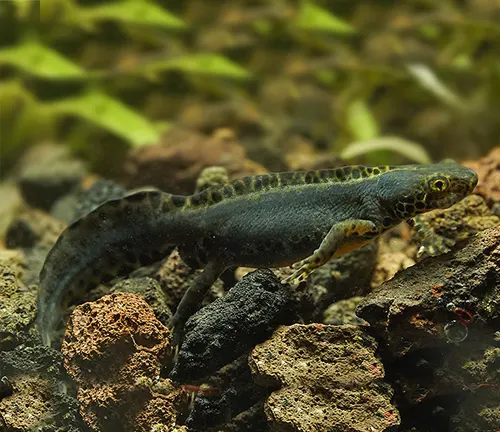
Ichthyosaura alpestris inexpectatus – Known for its distinct habitat and genetic differentiation, this subspecies is another example of the diversity within the Alpine Newt complex.
Ichthyosaura alpestris veluchiensis – Identified in certain areas of Greece, showcasing the geographical spread and adaptability of the Alpine Newt.

Conclusion
The Alpine newt is more than just an amphibian; it is a symbol of the intricate web of life that exists in our natural world. Their fascinating lifecycle, vibrant appearances, and ecological importance remind us of the delicate balance within ecosystems and the need for concerted conservation efforts. As we continue to explore and understand these remarkable creatures, we uncover the broader implications of our interconnectedness with nature and the imperative to protect it.
Frequently Asked Questions (FAQs)
- What do Alpine Newts eat?
Alpine Newts primarily feed on a variety of invertebrates, including insects, larvae, and worms. Their diet changes slightly depending on whether they are in their aquatic or terrestrial phase. - Where can Alpine Newts be found?
They are native to various parts of Europe, particularly in mountainous and forested regions. Their range extends across Central and Southern Europe, adapting to both aquatic and moist terrestrial habitats. - How do Alpine Newts reproduce?
Reproduction occurs in water, where males perform elaborate mating displays to attract females. Females then lay eggs individually on aquatic plants, which hatch into larvae before undergoing metamorphosis into terrestrial juveniles. - What is the lifespan of an Alpine Newt?
Alpine Newts can live up to 20 years in the wild, though their lifespan can vary depending on environmental conditions and predation pressures. - How can you tell the difference between male and female Alpine Newts?
During the breeding season, males are distinguished by their vibrant blue backs and orange bellies with black spots, along with a prominent dorsal crest. Females are generally duller, with a brownish-grey back and a less pronounced belly pattern, lacking the dorsal crest. - Are Alpine Newts endangered?
Currently, the IUCN lists Alpine Newts as Least Concern, indicating they have a stable population. However, they face threats from habitat destruction, pollution, and climate change, which could impact their numbers. - Can Alpine Newts be kept as pets?
Yes, Alpine Newts can be kept as pets, but it requires a specific setup that mimics their natural habitat, including both aquatic and terrestrial elements. Potential owners should research and prepare to meet their complex needs. - How do Alpine Newts adapt to different seasons?
They exhibit remarkable adaptability, living in water during the breeding season for mating and egg-laying, and returning to land for the rest of the year. They also engage in aestivation during dry periods to conserve moisture. - What threats do Alpine Newts face?
Main threats include habitat destruction due to urbanization and agriculture, pollution of water bodies, introduction of invasive species, and the impacts of climate change. - How do Alpine Newts contribute to their ecosystem?
As both predators and prey, Alpine Newts play a crucial role in controlling insect populations and contributing to the food web. Their presence indicates healthy, balanced aquatic and terrestrial ecosystems.



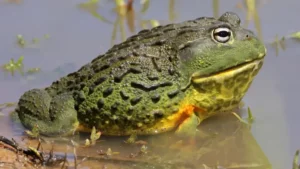

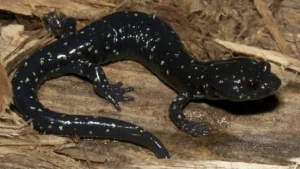


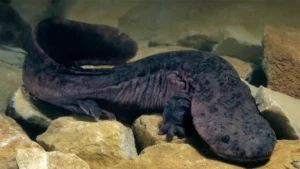

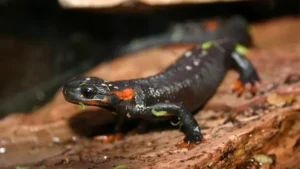
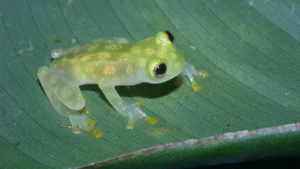
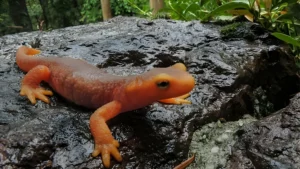

Leave your comment